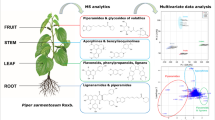Abstract.
Polar plants and animals survive in subzero waters (–2°C) and many of these marine organisms produce antifreeze proteins (AFPs) to better adapt themselves to these conditions. AFPs prevent the growth of ice crystals which disrupt cellular membranes and destroy cells by inhibiting crystallization of water within the organism. The hydrophilic extract of an Antarctic sponge Homaxinella balfourensis exhibited a non-colligative freezing point depression effect on the crystal morphology of water. The extract was purified by repeated reverse phase high-pressure liquid chromatography, then assayed and shown to contain several AFPs. The major peptide was isolated, analyzed using matrix-assisted laser desorption ionization mass spectrometry and the partial structure of the peptide identified through amino acid sequencing. AFPs have potential applications in agriculture, medicine and the food industry.
Similar content being viewed by others
Author information
Authors and Affiliations
Additional information
Received 23 July 2002; received after revision 14 September 2002; accepted 8 October 2002
RID="*"
ID="*"Corresponding author.
Rights and permissions
About this article
Cite this article
Wilkins, S., Blum, A., Burkepile, D. et al. Isolation of an antifreeze peptide from the Antarctic sponge Homaxinella balfourensis . CMLS, Cell. Mol. Life Sci. 59, 2210–2215 (2002). https://doi.org/10.1007/s000180200020
Issue Date:
DOI: https://doi.org/10.1007/s000180200020




